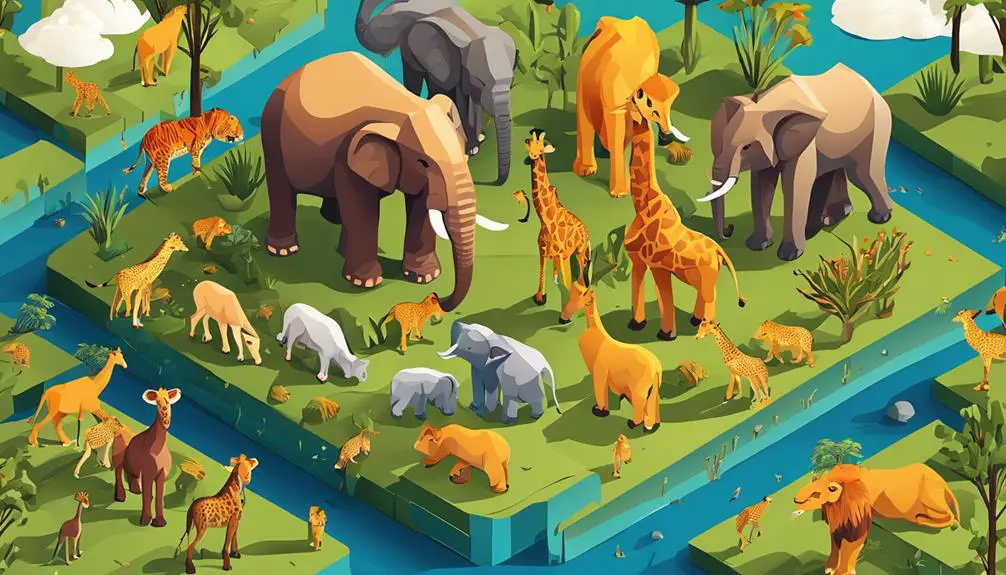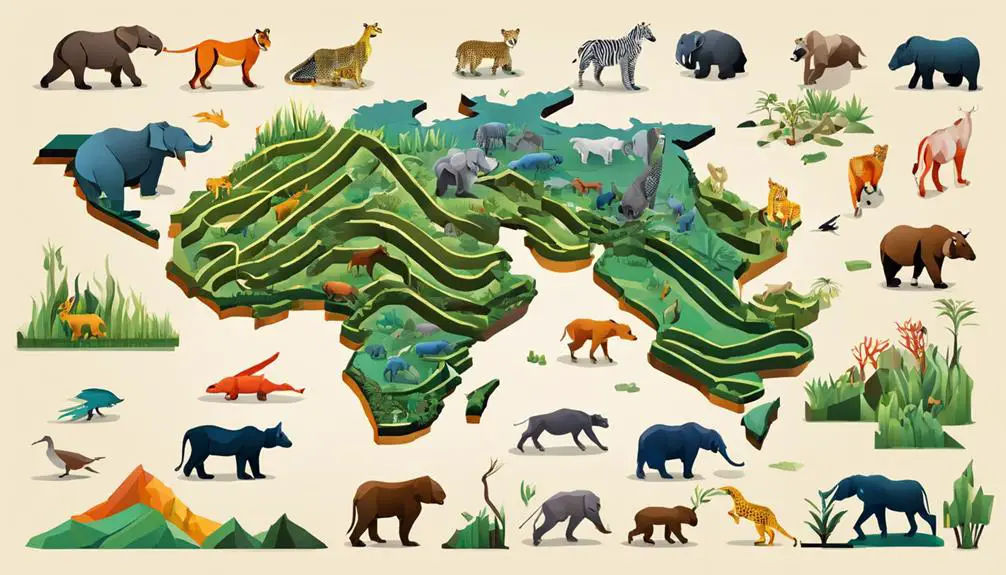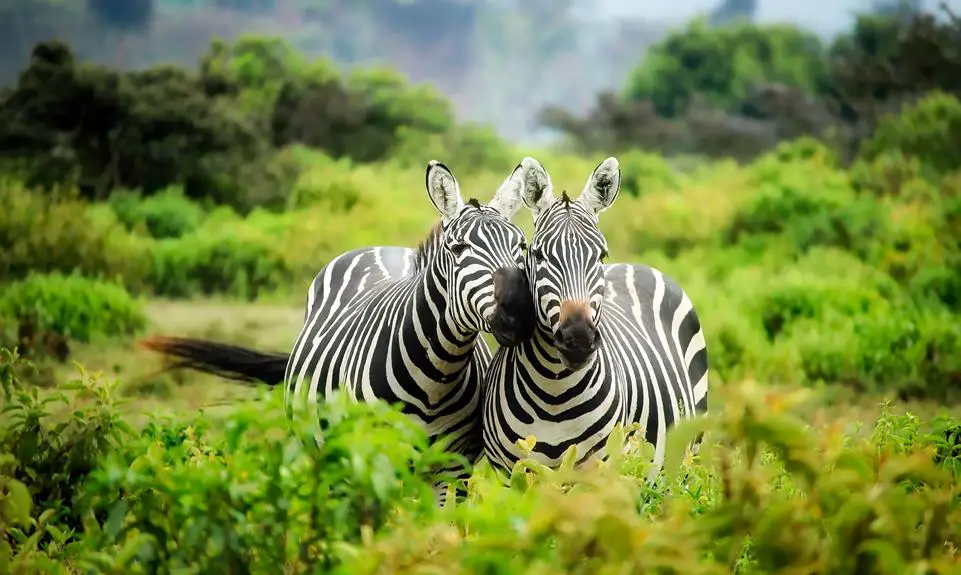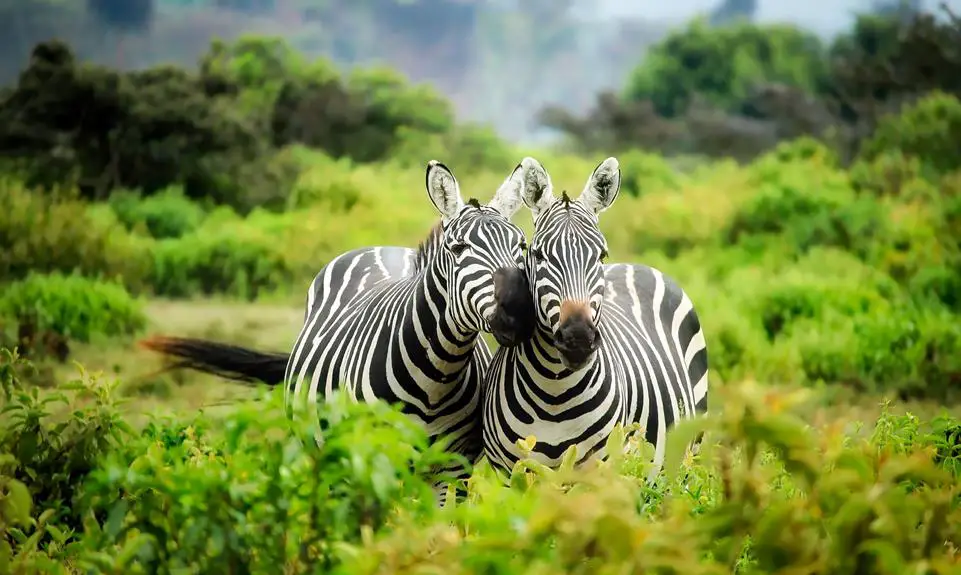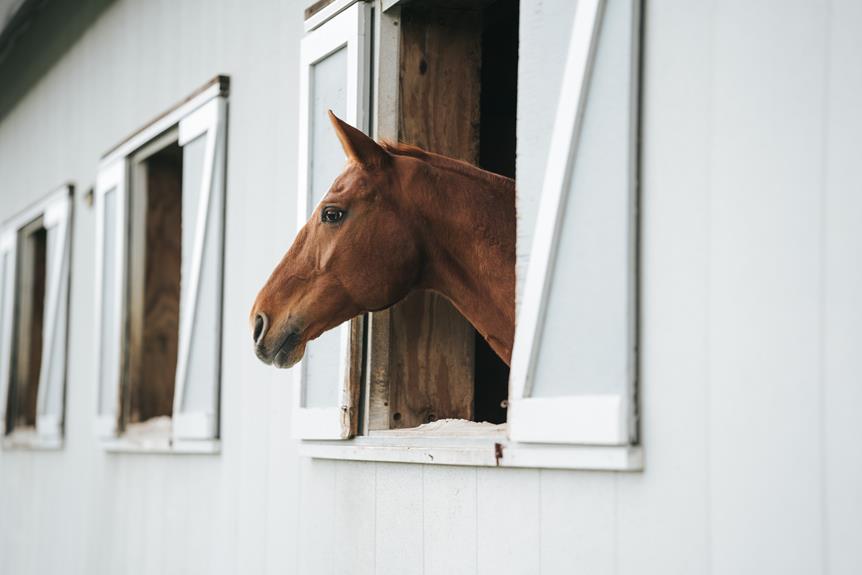The realm of statistics concerning wild animals unveils a stark reality that demands attention. Numbers reveal a distressing narrative of dwindling populations and vanishing habitats, with extinction rates soaring and biodiversity diminishing at an alarming pace.
As we delve into the data, a poignant question arises: What does the future hold for these majestic creatures and the delicate ecosystems they inhabit? The figures speak volumes, urging a closer examination of the intricate web connecting humankind and the wild world.
Key Takeaways
- Global wild vertebrate populations declined by 60% from 1970 to 2014.
- Nearly half of threats to wild vertebrates come from habitat loss.
- Habitat destruction drives thousands of species towards extinction annually.
- Illegal wildlife trafficking generates US $20 billion annually, fueling organized crime.
Global Wild Animal Population Trends
The precipitous decline in global wild vertebrate populations over the period from 1970 to 2014 underscores the alarming trend affecting various species across different ecosystems worldwide. This decline, amounting to a significant 60%, has impacted mammals, birds, reptiles, amphibians, and fish alike, indicating a widespread issue that transcends specific categories of wildlife. The consistency of this decline across diverse regions and ecosystems emphasizes the severity of the situation, reflecting the overarching threat faced by wild vertebrates globally.
With habitat loss and degradation identified as primary factors driving this concerning trend, attributed to unsustainable agriculture and urban development, the urgency of addressing these issues becomes apparent. Nearly half of the threats to wild vertebrates stem from habitat loss alone, highlighting the critical need for conservation efforts to mitigate these impacts. As such, concerted actions are imperative to reverse this decline and safeguard the future of global wild vertebrate populations.
Threats to Wildlife Habitats
The threats facing wildlife habitats are pressing and severe, with habitat destruction driving thousands of species towards extinction annually. Human encroachment into natural areas has dire consequences for the delicate ecosystems that support a diverse range of species.
In light of these challenges, conservation efforts are more crucial than ever to safeguard the remaining wildlife habitats and the biodiversity they harbor.
Habitat Loss Impact
Habitat loss poses a significant threat to wildlife populations worldwide, driven by unsustainable human activities such as agriculture, logging, and urban development. This primary threat affects nearly half of all vertebrates, leading to a decline in various species across diverse ecosystems.
Common causes of habitat loss include fragmentation and water abstraction, further endangering wildlife. Alarmingly, iconic habitats like the Amazon rainforest have decreased by 20% in the last 50 years, emphasizing the critical risk to biodiversity.
To combat this trend, preservation efforts are essential to halt ongoing destruction and prevent further loss of ecosystems. Addressing habitat loss is crucial to safeguarding wildlife populations and maintaining ecological balance in our rapidly changing world.
Human Encroachment Consequences
Amid escalating human encroachment, wildlife habitats face escalating threats, endangering the delicate balance of ecosystems worldwide.
The consequences of this encroachment are dire, with habitat destruction occurring at an alarming rate of about 5,760 acres per day, leading to a loss of approximately 240 acres per hour. This rampant destruction is a primary driver behind the staggering 80% decline in global biological diversity.
Furthermore, the dominance of livestock production fueled by the demand for inexpensive meat is significantly contributing to the extinction of numerous species.
These facts underscore the urgent need for concerted efforts to address the devastating impacts of human encroachment on wildlife habitats.
Conservation Efforts Necessity
Escalating human encroachment on wildlife habitats necessitates urgent and strategic conservation efforts to mitigate the threats posed to global biodiversity.
Habitat destruction, causing approximately 80% of the decline in global biological diversity, is occurring at an alarming rate of 5,760 acres per day or 240 acres per hour. Currently, only 4% of mammals worldwide are considered wild animals, highlighting the extent of habitat loss.
The destruction of wildlife habitats is a critical issue that directly impacts global biodiversity. Without immediate and effective conservation measures, the continued degradation of these habitats will lead to irreversible consequences for numerous species and ecosystems.
It is imperative to prioritize conservation efforts to preserve the rich diversity of wildlife on our planet.
Impact of Climate Change on Wildlife
The detrimental effects of climate change on wildlife populations have become increasingly evident in recent decades. Climate change has caused a 60% decline in wild vertebrate populations from 1970 to 2014, highlighting the urgency of addressing this issue.
Bird and fish populations are particularly at risk due to the effects of climate change on their habitats, with disruptions in food sources and breeding grounds leading to population declines.
Furthermore, over 1 million species are at risk of extinction due to the impact of climate change on wildlife, emphasizing the widespread threat this phenomenon poses to global biodiversity.
As climate change continues to alter 75% of Earth's land surface through human-induced actions, it is clear that mitigating these threats is crucial for the conservation of wildlife and the preservation of their habitats.
Endangered Species Statistics
Given the alarming decline in wild vertebrate populations attributed to climate change, the focus now shifts to examining the stark realities revealed by Endangered Species Statistics. Approximately 30,000 species per year are being driven to extinction, equaling about three species per hour. Shockingly, only 4% of mammals currently living in the world are wild animals. In the United States, one-third of wildlife species are at an increased risk of extinction, with more than 150 species already extinct and nearly 500 possibly facing the same fate.
The situation is particularly concerning for freshwater species. Around 40% of freshwater fish species are classified as rare or imperiled, while a staggering 70% of North America's freshwater mussels are either imperiled or already extinct. These statistics highlight the urgent need for conservation efforts and stronger protective measures to safeguard endangered species and their habitats from further decline and potential extinction.
Human-Wildlife Conflict Data
How do human-wildlife conflicts impact global biodiversity and local communities?
Human-wildlife conflict is a significant issue affecting various species worldwide. Here are three critical points to consider:
- Over 2,000 Species Affected: Human-wildlife conflict has repercussions on more than 2,000 species globally, leading to disruptions in ecosystems and threatening biodiversity.
- Elephants and Human Territories: Approximately 80% of African elephants' habitats intersect with human territories, increasing the likelihood of conflicts between communities and these iconic animals.
- Rural Community Impact: In some regions, human-wildlife conflicts impact over 50% of rural households, causing economic losses and posing challenges to the livelihoods of local communities.
Efforts to address these conflicts include the establishment of wildlife corridors and the implementation of deterrent methods to safeguard both wildlife and human interests. By understanding the extent of these conflicts and implementing effective strategies, we can strive to minimize negative impacts on biodiversity and promote coexistence between humans and wildlife.
Wildlife Conservation Efforts Overview
Human-wildlife conflicts underscore the urgency for robust wildlife conservation efforts globally. Conservation organizations such as the African Conservancy and Wildlife Conservation Society are pivotal in safeguarding wildlife.
The International Union for Conservation of Nature and Natural Resources plays a crucial role in monitoring and protecting endangered species on a global scale. Collaborative research efforts, exemplified by institutions like the American Museum of Natural History, provide valuable insights to support conservation initiatives.
Furthermore, the Convention on International Trade in Endangered Species of Wild Fauna and Flora regulates wildlife trade to ensure the preservation of wildlife populations. Conservation endeavors are essential in addressing the loss of wildlife habitats and protecting endangered species worldwide.
Through these concerted conservation efforts, stakeholders aim to mitigate the threats faced by wildlife and promote a sustainable coexistence between humans and the natural world.
Wildlife Trafficking Statistics
Wildlife trafficking statistics reveal the alarming scale of illegal trade in exotic animals and their parts, highlighting a pressing global concern. The illicit industry not only poses a threat to various species but also fuels criminal activities worldwide. Here are three key points shedding light on the severity of wildlife trafficking:
- Economic Impact: Illegal wildlife trafficking generates an estimated US $20 billion annually, making it a lucrative business for organized crime groups. The high profits motivate poachers and traffickers to continue exploiting vulnerable species for financial gain.
- Pangolin Poaching: Pangolins, the most trafficked mammals globally, are facing a dire situation as they are being taken from the wild at a staggering rate of one every five minutes. This relentless poaching is pushing these unique creatures towards extinction.
- Elephant Slaughter: In Africa, an average of 96 elephants are killed daily for their ivory, jeopardizing the future of this iconic species. The imbalance between the number of elephants killed and born poses a significant threat to the survival of African elephants, emphasizing the urgent need for stronger anti-trafficking measures and conservation efforts.
Conclusion
In conclusion, the statistics about wild animals illustrate the urgent need for conservation efforts to address the alarming rate of extinction and habitat destruction. With approximately 30,000 species lost each year, the impact of human activities on biodiversity is evident.
Climate change exacerbates these threats, further endangering wildlife populations. It is crucial for global conservation initiatives to prioritize protecting endangered species and their habitats to ensure the preservation of biodiversity for future generations.

